The World Most Dangerous Tourist Destinations

Various captivating destinations around the world attract a significant number of tourists, offering diverse experiences such as tropical paradises and mountainous peaks, appealing to those who seek both warmth and adventure.
Even though some places are amazing, they can also be incredibly dangerous. There are several potential threats, including high crime rates and natural disasters. Although some of these places may not be the most dangerous to visit, it is important to exercise caution due to underlying reasons. The following are the top dangerous tourist locations in the world.
1. Trolltunga, Norway
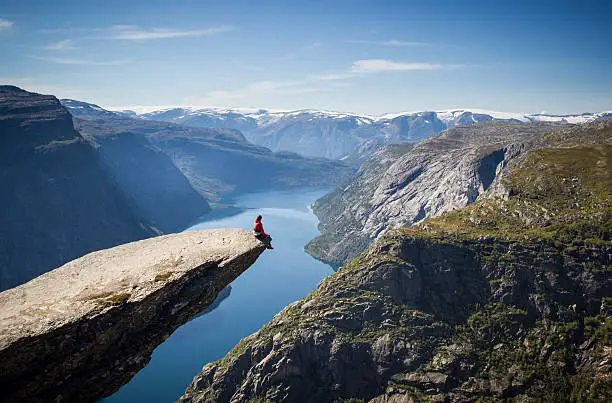
Trolltunga, also known as Troll Tongue, is a popular tourist destination in Norway. It is a rocky outcropping that rises 700 meters above Lake Ringedalsvatn in the Vestland region and is about 10 meters in length. The base of the outcropping is wide and relatively safe, while the edge that hangs over the abyss is narrow and thin, and there are no safety barriers. Despite the strong winds, frequent fogs, and risk of falling, many people still visit Trolltunga to take extreme selfies.
You've got to give them credit; the images are quite stunning, showing the bare, inaccessible rocks against the sky's gray clouds and the shimmering lake's surface below. You may even photograph the Folgefonna Glacier when it is covered with snow when the weather is good.
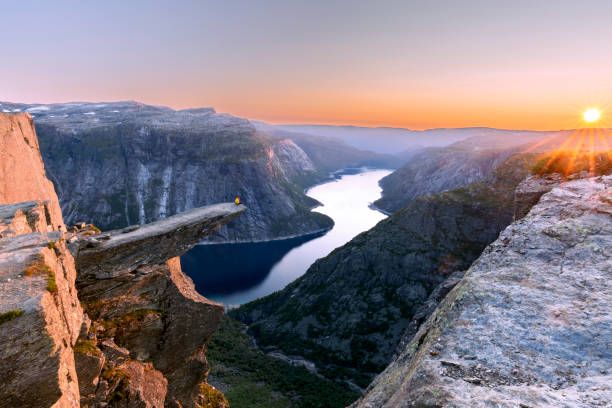
The images are impressive and showcase the rugged, unapproachable rocks against the backdrop of gray clouds and the shining lake below. It's possible to take pictures of the Folgefonna Glacier covered in snow on clear days.
The hike to Trolltunga is only possible from June to August and is known for its challenging terrain. The path winds through hilly and snowy areas, with steep ascents and descents, slippery stones, and streams to cross. Despite the difficulties, many hikers enjoy the journey for the chance to see Norway's beautiful natural scenery.
2. El Caminito Del Rey, Spain
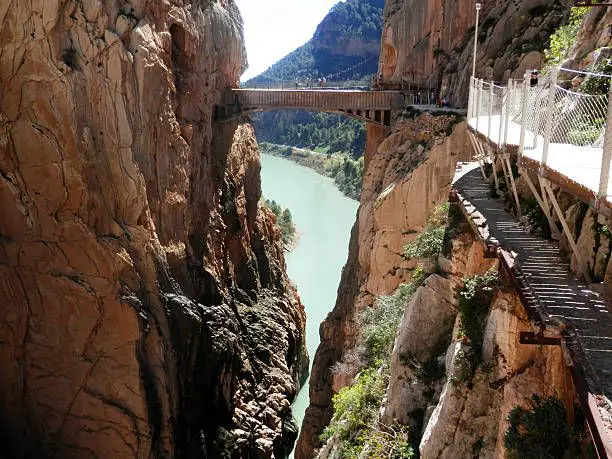
The El Caminito del Rey, also known as the "Route of Death," is a highly challenging mountain trail located in the El Chorro Gorge of the Spanish province of Malaga. It is a popular climbing destination in Europe and is situated in Andalusia.
The route was constructed for the workers who built the hydraulic structures of the Conde de Guadalhorce reservoir between 1901 and 1905. It consisted of a narrow, 100-meter-high concrete path along the rocks, connected by a small suspension bridge across the canyon.
The road eventually stopped being used, and it started to steadily deteriorate. But as extreme tourism became popular, people started to think about El Caminito del Rey once more.

The "trail of death" was shut down by the authorities in 2001 following a string of incidents. Only 15 years after the initial closure, it reopened with the status of a recognized tourist destination. El Caminito del Rey was rebuilt at this time, and the most hazardous areas were equipped with railings and a wire fence.
Accidents are still possible on the 7.7-kilometer-long track because it is still regarded as being quite challenging. The bird's-eye views of the craggy cliffs, the gorges and river bed, the spectacular canyons, the old railroad, the Gaitanejo Reservoir, and the lush Hoyo Valley, however, are undoubtedly breathtaking for those who dare to walk it.
3. Devil's Pool, Zambia
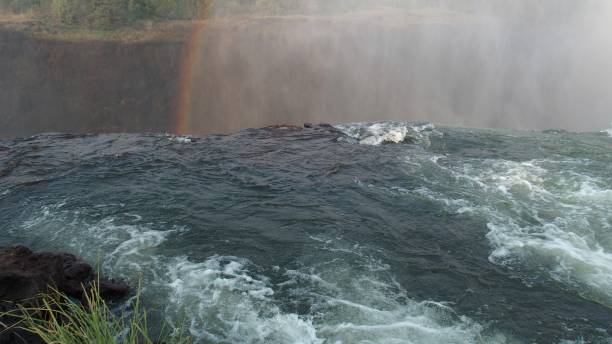
At the very edge of Zambia's Victoria Falls sits this breathtakingly gorgeous natural landscape pool. Many people take a risky plunge into it, not only to see but also to experience the Zambezi River's raging waters. After navigating the final rocky obstacle, they plunge 120 meters to the ground.
Perched at the brink of Victoria Falls in Zambia is a stunning natural pool surrounded by breathtaking scenery. Visitors often take a daring leap into the pool, not only to admire the view but also to feel the force of the Zambezi River's powerful currents. After maneuvering through the last rocky obstacle, they plummet 120 meters to the ground below.

Brave daredevils who like to take risky photos for social media are often swept away by rivers, making it difficult to find them later. They are particularly at risk when trying to reach the farthest point over a cliff
Reaching the Devil's Pool at Livingstone Island is a risky endeavor, as it requires navigating the crocodile and hippo habitat of the Zambezi River. When they are disturbed, they are known to be extremely aggressive. However, it's important to recognize that those who seek out this intense experience can gain some truly unique and memorable impressions, such as the awe-inspiring sight of a powerful waterfall with a rainbow overhead.
4. Death Valley National Park, California, USA
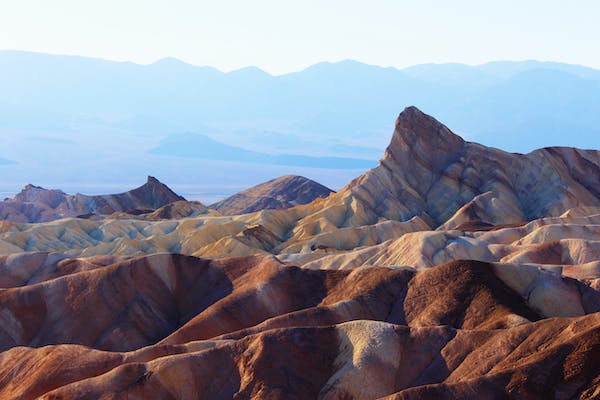
The driest and hottest location in the United States is Death Valley National Park, which is known for its extreme conditions. In the 19th century, many miners lost their lives in the area while searching for gold.
Despite the decrease in number of deaths, Death Valley continues to claim lives, with an average of 10 deaths per year. The main hazard in the area is the extreme heat. The temperature in the summer can reach a high of +57°C during the day, and drop significantly at night. The region also has dangerous wildlife such as coyotes, rattlesnakes, scorpions, and black widow spiders. Additionally, flash floods and mudslides can occur during rainstorms.
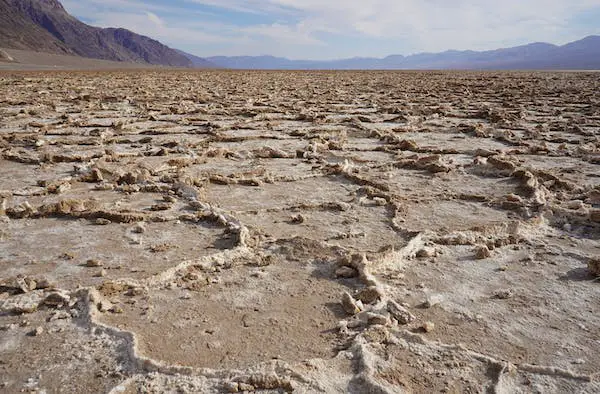
Tourists are attracted to this dangerous location due to its unique and otherworldly landscape. The area features a variety of geological features such as colorful mountains, sand dunes, salt flats, dried-up rivers, canyons, and clay deserts. Popular spots include Zabriskie Point and Dante's View for their stunning views, Artists Palette for its rainbow hills, Badwater Basin for its unusual salt marsh, Mosaic Canyon, and Racetrack Playa Lake for its mysterious moving boulders.
5. Blue Hole, Egypt
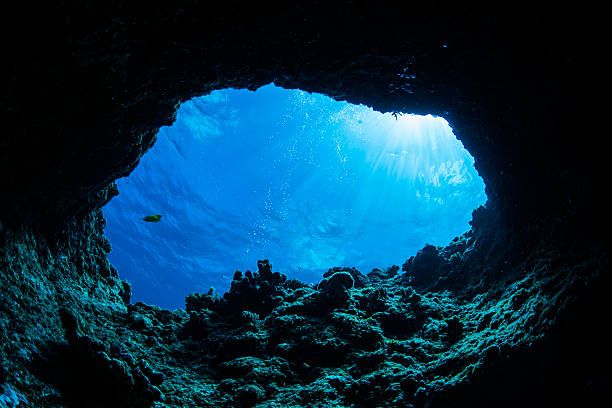
The Blue Hole is a stunning Red Sea reef featuring a vertical underwater cave that is over 120 meters deep, located 15 kilometers from the Egyptian resort town of Dahab. Despite its nickname as the "graveyard of divers," it is considered one of the best dive spots in the world by travel publications.
150 daredevils who lost their lives in the Blue Hole karst sinkhole over the past 20 years are honored with a spontaneous memorial made of nameplates on a seaside cliff. There are no official figures for the fatalities.
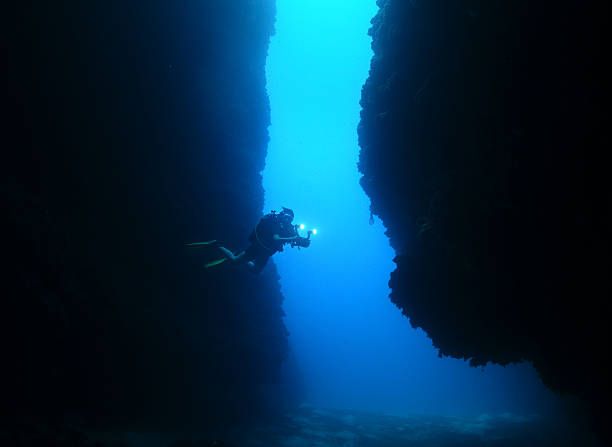
Untrained divers often get into accidents when they enter the Arch, a horizontal tunnel connecting the cave and ocean, without the necessary technical diving gear. These accidents typically occur due to nitrogen narcosis, disorientation, and running out of air during the ascent.
The Blue Hole can only be explored by divers who are Advanced Open Water Divers. The vibrant reef is home to a wide range of marine life, including predatory barracudas, moray eels, and colorful parrotfish. A sizable colony of the uncommon coral Pachyseris Speciosa, sometimes known as "elephant skin," covers one of the cave walls.
6. Everest, Nepal
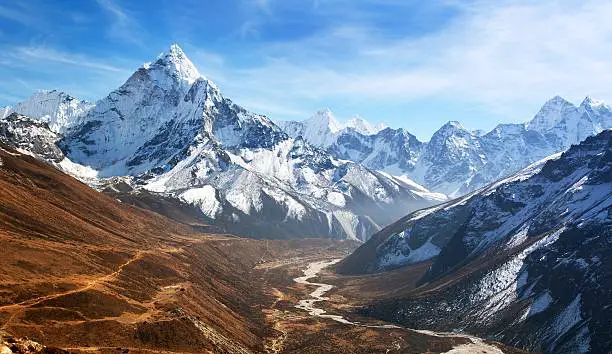
Climbing Everest is considered by many climbers to be a significant test of ability and stamina. And there is no question that it is among the most hazardous locations on earth.
The terrifying 8,849-meter-high peak offers its ascentors many treacherous obstacles, including sudden weather changes, blizzards, winds, avalanches, steep crevasses covered in snow, cliffs, ice streams, and subfreezing temperatures (down to -30°C).
It is what happens to the human body as you ascend, though, that is the most terrifying thing. The body only obtains 60% of the necessary oxygen while at 3,600 meters because of how thin the air is. Climbers have described the experience as being similar to trying to run while breathing through a cocktail straw.
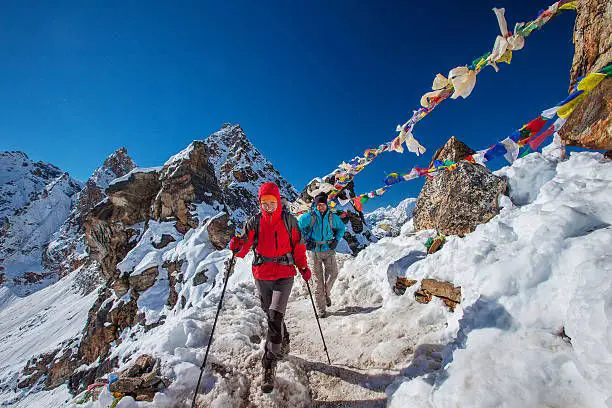
At a height of 5,000 meters, the base camp is situated. The risk of blood clotting, which can cause heart attacks, strokes, and pulmonary edema, increases with even a brief stay there. General weakness, choking and coughing episodes, as well as altered consciousness up to hallucinations, are all symptoms of oxygen deficiency.
A tank of oxygen is required to survive in the dead zone, which starts at an altitude of 8,000 meters. Climbers waste this precious resource by waiting hours to ascend the steep path that leads to the Everest Peak. Some people therefore just run out of oxygen during the descent and pass away.
Everest has claimed more than 300 deaths in the last century. And since carrying their bodies down is both technically challenging and expensive, the Himalayan Rescue Service reports that roughly 200 of the deceased have been allowed to rest on the peak.
7. Anak Krakatoa, Indonesia
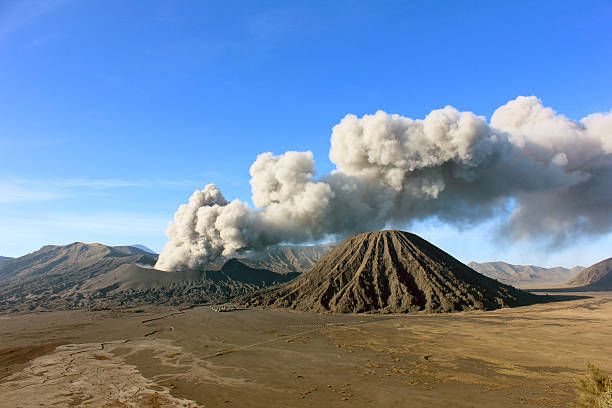
The Pacific Ocean volcano island with this name belongs to Indonesia and is deserted. This location saw the deadly Krakatoa volcano eruption in 1883. More than 30,000 people perished as a result of the tsunami wave's 37-meter height and the island was divided into four halves.
The volcano itself was believed to have been destroyed for a while. The name Anak Krakatao, which in Indonesian means "child of Krakatao," was given to the new fire mountain that emerged from the river 45 years later in its place.
It has consistently expanded since its beginning (about 7 meters per year). Its height today exceeds 800 meters. Because it's always awake, this volcano is one of the most dangerous locations on earth.
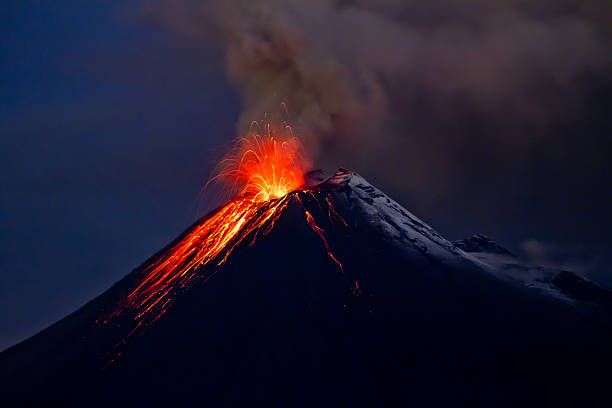
It has experienced five significant devastating eruptions in its lifetime. Then there are many strombolian ones as the blazing monster spews out lava, ash, toxic gas clouds, and red-hot rock debris into the air.
The fact that Anak Krakatoa is a very well-liked tourist destination does not change this, either. The volcano may be reached by boat cruises. Visitors are even permitted to set up tent on the black sand beach and walk the scalding lava fields if they behave themselves quite well.
8. North Yungas Road, Bolivia
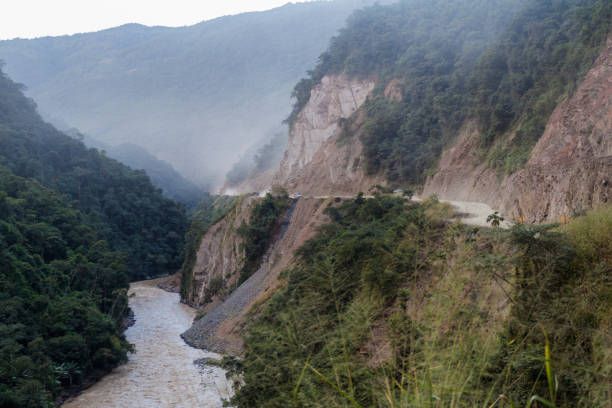
The experience is compared to climbing Everest by tourists who have successfully navigated this route and survived. The Bolivian Road of Death is the most popular term for the road, even though its official name is North Yungas Road.
Built in the 1930s, the La Paz-Coroico route stretches 56 km along a steep mountain serpentine, with elevation differences ranging from 4,650 m to 1,200 m. The road is narrow, measuring just 3.2 m in most places, making it challenging for vehicles to pass one another.
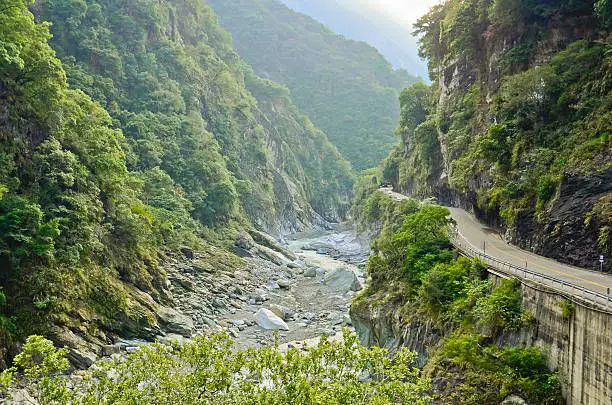
The Northern Yungas is also almost entirely covered in clay, which is overly slick due to the extreme humidity, rather than asphalt. And when you factor in the frequent downpours that cause landslides, the reduced visibility brought on by fog, the rockfalls, and the waterfalls, it becomes evident why the Road of Death claims up to 300 lives annually.
Locals have been utilizing North Yungas much less frequently ever since the new road from La Paz to Coroico opened in 2006. But the number of extreme visitors has significantly increased, not just in vehicles but also on bikes and motorcycles. Downhill mountain biking is the most popular kind of fun that many travel organizations provide to tourists. This attraction has claimed at least 13 lives in the last ten years.
9. Madidi National Park, Bolivia
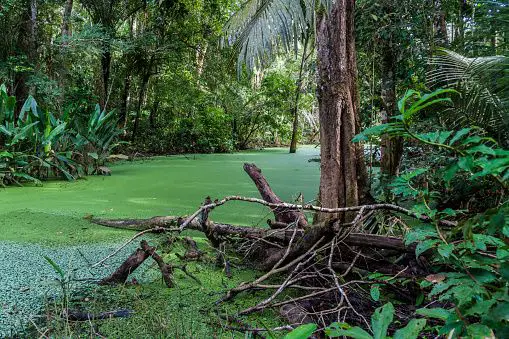
Everyone is aware that Australia has been dubbed the land where every living thing tries to kill you. Even so, it treats visitors significantly kinder than Bolivia's Madidi National Park. Any tourist who is not cautious and respectful enough of its flora and fauna runs the risk of either experiencing the most agonizing experience of their lives or losing it entirely.
At the foot of the Andes, in the department of La Paz, in northwest Bolivia, is the spectacular wilderness known as Madidi National Park. Its 18957 km2 of land area spans numerous climatic regions. The park appears to be a true paradise at first glance and it's the most significant on the planet in terms of biodiversity.
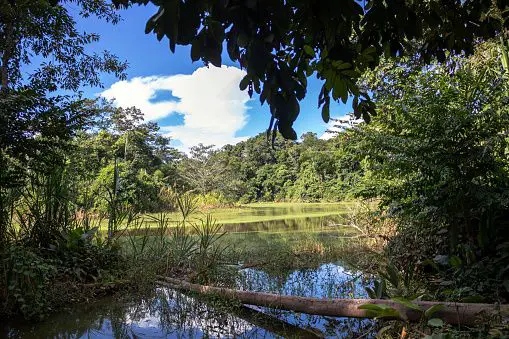
The majority of plants provide a serious risk for allergic reactions, including breathing difficulties, rashes, itching, and dizziness. Dangerous parasites can enter the human body through even minor cuts and wounds, as well as through water and food. Additionally, indigenous gadflies and flies lay their eggs under the skin of both animals and people. Extreme tourists also face this destiny. In light of this, even the park's predators do not seem particularly dangerous.
10. Huashan, China

The Shaanxi Province, at the center of the Celestial Empire, is home to Huashan, one of the Taoist religion's holiest mountains in China. Central, North, West, East, and South are its five highest points. The most elevated is the last one (2154 m). Taoist monks used to hike up to the temple at the top via this fabled Trail of Death.
Tourists who want to experience a never-before-seen adrenaline rush and take in the breathtakingly stunning surroundings now travel this incredibly hazardous route.
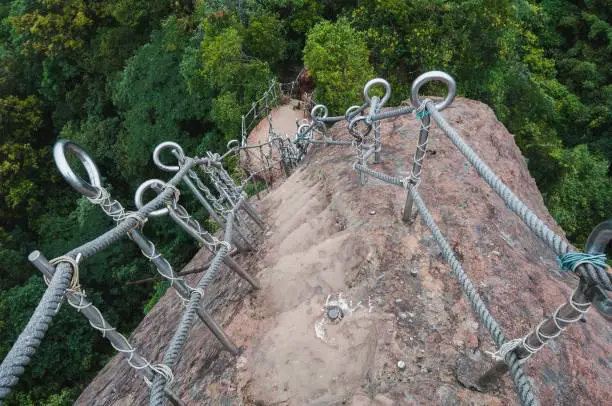
For the adventurous, the temple has been transformed into a tea cafe. The path is made of wood and is two planks wide. It curves around the steep cliffs. The trail is made of two-plank broad planks of wood and curves around the high cliffs. It hangs above a gorge by several hundred meters. There are no fences or railings. It can only be traversed by pushing up against the stone walls and grabbing onto the chains fastened to them.
There is a safety net made of a short rope. Even the most desperate adrenaline junkie should think twice before embarking on the Path of Death because the tracking takes around 30 minutes, any error could result in fatalities, and you have to return the same way. Thousands of tourists still flock here each year to challenge themselves, nonetheless, in spite of this.
11. Yucatan Cenotes, Mexico
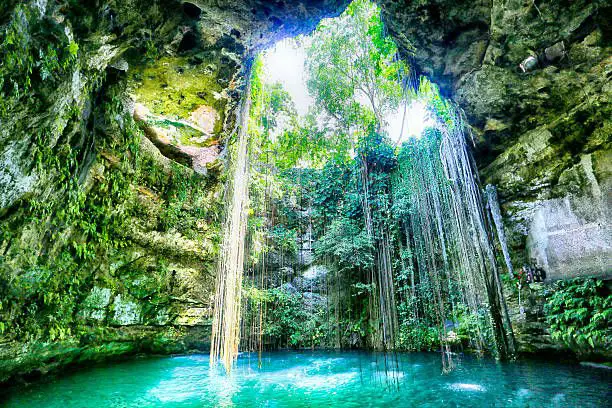
The enigmatic cenotes, which are sinkholes filled with fresh water and connected by a network of subterranean tunnels, are one of the reasons why divers are so drawn to the Mexican portion of the Yucatan Peninsula. On the Yucatan, there are thousands of them. And only a small portion of it has been explored and made accessible to tourists.
These natural lakes were used for sacrifices and as wells by the ancient Maya. "Gates to the realm of the dead," was the name given to them. And they weren't entirely off. Divers should avoid unmapped caves and tunnels as well as well-explored underground labyrinths.
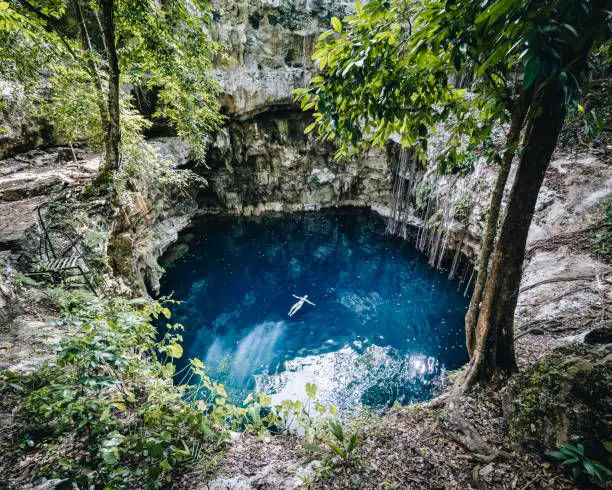
Here, divers face a number of hazards, including darkness, constrained space, impeding vegetation, confusion, a lack of clarity regarding the dive's purpose and duration, and ultimately, a lack of oxygen.
A game of death is constantly involved when diving into uncharted cenotes. But many people visit to experience their unique aura of mystery and tranquility, witness the breathtaking underground caverns, columns of stalactites and stalagmites, exotic fish, and gorgeous underwater landscapes, lighted by the sunshine falling through the pores of these natural wells.
12. Fagradalsfjall, Iceland
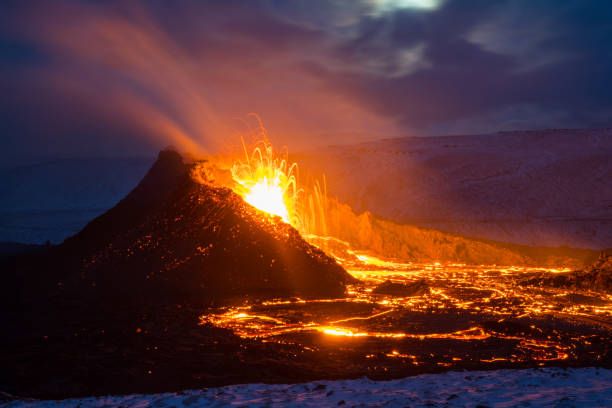
The Fagradalsfjädl volcano erupted for the first time in 6,000 years in March 2021, 30 kilometers from Reykjavik, in the middle of the Reykjanes Peninsula. It quickly replaced the Golden Circle as Iceland's greatest attraction.
Thousands of tourists are drawn to the volcano because they aren't concerned about getting harmed, burned, or poisoned by hazardous fumes in the lava fields. The cone of the volcano rises 224 meters above the topography.
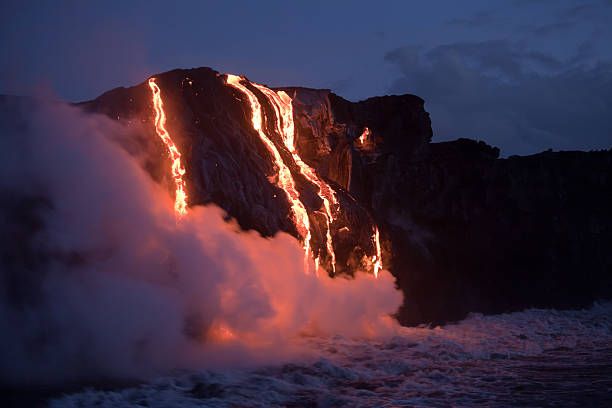
Magma has been hardened all around it, and lava is spewing out of the 334 m-diameter crater. It might flow slowly and lazily at times or suddenly erupt like a geyser. However, people who want to see them up close should be careful while deciding from which side to approach Fagradalsfjädl because the wind can cause clouds of hazardous gases to randomly change direction.
The red-hot tubes and pockets beneath the ostensibly frozen surface, which you can fall into, present another risk to tourists. Icelandic authorities urge tourists to keep a safe distance away from the roaring fire element in order to properly view it.
13. Kalalau Trail, Hawaii
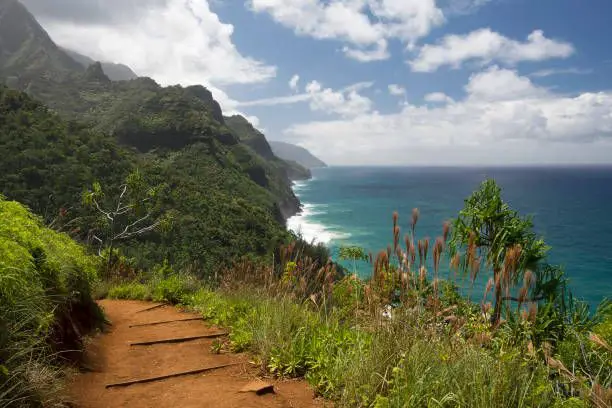
On Kauai, the oldest island in the Hawaiian archipelago, the Kalalau Trail follows the picturesque Npali Coast State Wilderness Park. The Pacific Ocean, coastal cliffs, sleeping volcanoes, steep valley slopes, and a white-sand beach will all be seen to daredevil hikers as their reward.
However, bear in mind that this journey is not only stunning but extremely perilous. The Kalalau Valley is reached after leaving Kee Beach. It requires exceptional physical preparation to travel the 35 km distance in two days to reach both ends of the trail.

Trudging through the forest, crossing rivers in the mountains that turn into lethal floods after rain, and dodging frequent rockfalls are all challenges faced by hikers. Additionally, a few hikers have been killed or severely injured after being thrown off the precarious track by waterfalls.
The beaches that the path travels through, though, represent the most threat. They appear to be very hospitable at first glance. However, swimming or even just walking by the ocean might have disastrous results.
The coastline is rough and full of unpleasant shocks, the waves are very high, and the undercurrents are fierce. Statistics show that more than 100 tourists have perished on the trail's seaside sections. Hanakapiai is the most perilous of them all.
14. Yosemite Half Dome, California, USA
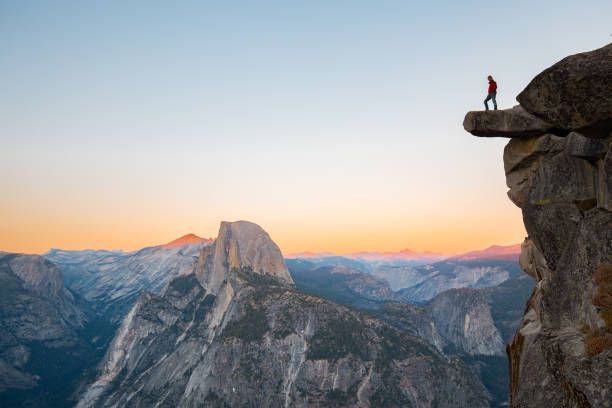
The longest, riskiest, and most thrilling trail in Yosemite National Park is the one that leads to the granite rock known as Half Dome. Its 1,450 meter high top was once thought to be impassable. In the year 1875, George G. Anderson became its first victor.
He dug holes in the mountain's solid wall, which were later utilized to install cables that facilitated the climb. Up to 50,000 hikers attempt the Half Dome each year, but not every one of them succeeds.
Many people who are unaware of their strength are saved by Rangers, yet some tragically pass away. And there are more than 60 of them. The granite cliff and ropes become extremely slick in rainy conditions. The Slabs of Death, from which numerous hikers have previously perished, are the most hazardous part of Half Dome.
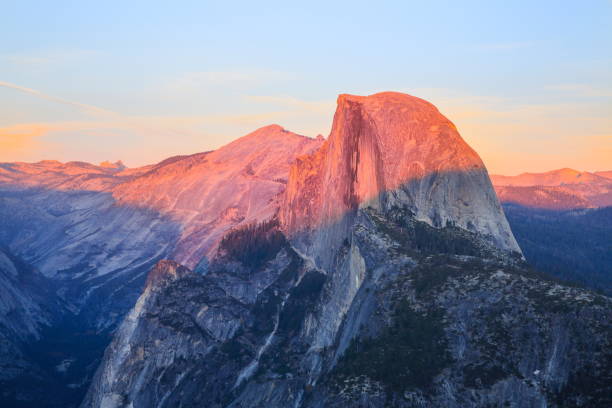
Climbers also run the risk of being struck by lightning on and near the peak. There have been at least five of these instances, two of which have resulted in death. Altitude sickness, which can cause vomiting, lightheadedness, and cardiac issues, is another risk factor. We also shouldn't ignore the possibility of running into a black bear. However, Yosemite will be seen for all eternity to those who conquer all challenges and ascend Half Dome.
15. Kjeragbolten, Norway
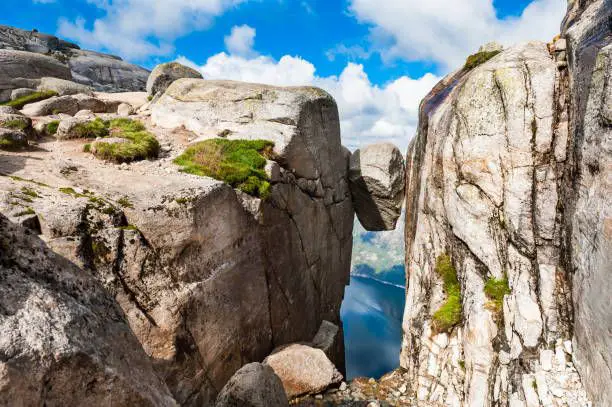
Another well-liked attraction in Norway is the renowned Kjerag Bolt (Kjeragbolten), which is a trip to which increases the degree of excitement. This enormous boulder is positioned about a kilometer above the Lysefjord, wedged between two vertical boulders. To get there, you must travel a 12-kilometer road that is fairly difficult.
Along its whole length, tourists must descend and ascend numerous times. A large portion of the trail is made up of bare rock, which is hazardous due to the dampness and extremely slippery. Because of this, it is preferable to stay home when it's raining or the weather is gloomy.
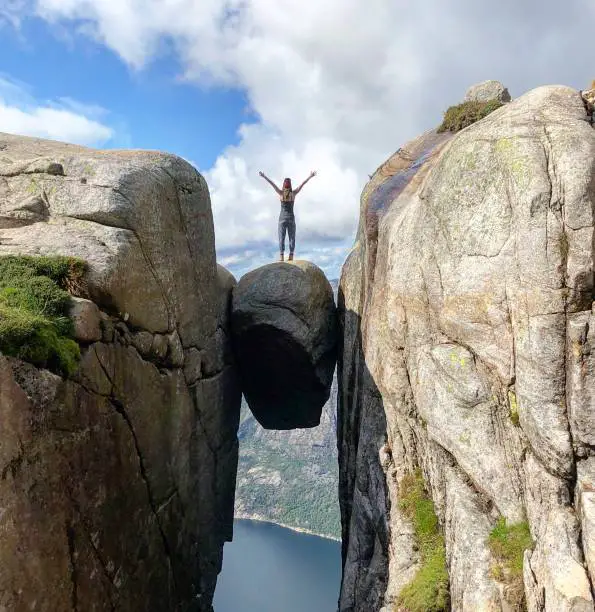
In addition to the opportunity to take the famous shot while standing on the Kjeragbolten, those who successfully completed this path were rewarded with beautiful views from the Kjerag plateau.
However, you have to climb it by pressing your chest on a rock as you move over a little rock ledge. You can grab onto the ring to keep yourself safe. Even in dry weather, there is a chance of falling off or stumbling and sliding down the rounded surface of the rock. However, the images of the daredevils do come out beautifully.
16. Danakil Depression, Ethiopia
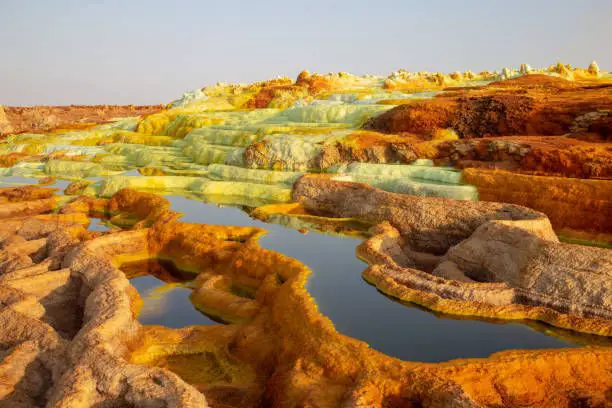
In northern Ethiopia's named desert is where you can find the Danakil Depression. One of the hottest areas in the planet is there. The soil can reach a temperature of +70°C, and the summertime maximum air temperature is +63°C. However, countless daring explorers trek here, risking their lives to witness the utterly bizarre vistas of the Danakil Depression.
The dormant Ayalu and Dallol volcanoes, as well as the active Erta Ale volcano, are the three volcanoes present. The latter has two lava lakes at once for the first time in the history of the planet. The surface of the Depression is filled with many hot springs. Complex salt "sculptures," in hues of terracotta, terra-cotta, yellow, and green, surround them.
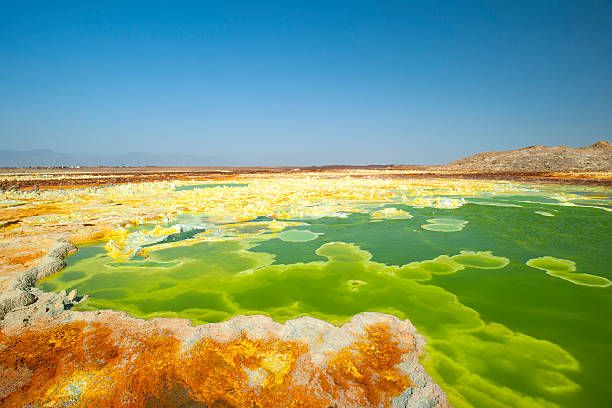
Particularly gorgeous are the shores of the sizable Dallol Lake, which glisten in a variety of colors, from lemon to purple. Its water is colored like grass and really boils because to its high temperature of 110°C. Danakil's air is noxious, caustic, and full of deadly gases. Not only is it difficult to breathe here, but it's also possible to become seriously poisoned, burn, and lose consciousness.
17. Hawaii Volcanoes National Park, Hawaii, USA
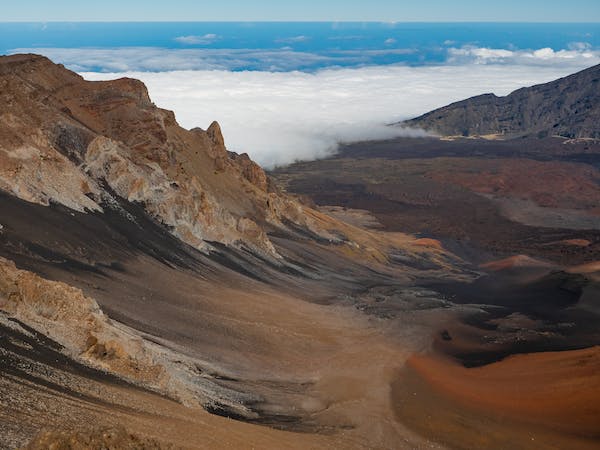
The total area of Hawaii Volcanoes National Park is 1,308 km2. It is a UNESCO World Heritage Site and is regarded as a distinctive geological landscape. Two of the most active volcanoes on our planet are its most well-known tourist attractions. The second-largest volcano on Earth, Mauna Loa is a member of the mega volcanoes category.
Its final significant eruption was noted in 1984. But it is active; fresh fumaroles are constantly forming, there are frequent ground shocks, and the soil is deforming. Since 1983, Kilauea has been erupting continuously and has drawn a large number of tourists.
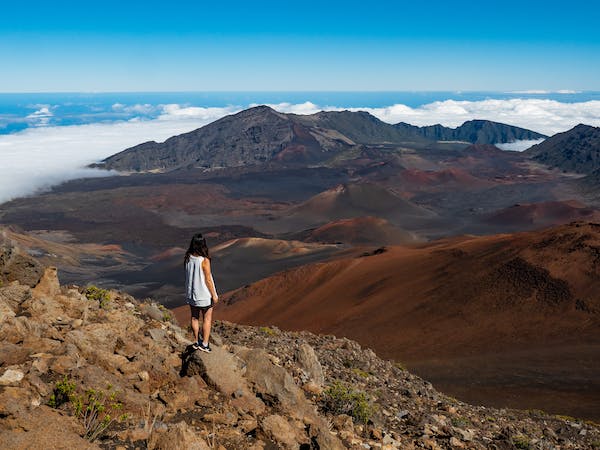
Each one of them is prepared to take a risk in order to witness lava flows and the blazing crater vent at night, as well as the ash, gas, and steam clouds that rise into the sky during the day. In order to keep people safe and keep an eye on the fire giants, park rangers take tremendous precautions.
However, Hawaii Volcanoes National Park remains one of the most dangerous places on earth because to their unpredictable nature. Even on tested paths, lava-filled sinkholes frequently arise, cliff edges frequently abruptly collapse, and ground fractures frequently appear. Toxic volcanic emissions can also harm your eyes and induce breathing issues, unconsciousness, and even heart failure.
18. Lake Natron, Tanzania

It is difficult to imagine that Lake Natron was photographed on Earth when looking at the several images of it. It has a thick salt crust on top that is occasionally tinted in various pink and red hues. In addition to being extremely hot (between +40°C and +50°C), its water is more akin to a potent alkaline liquor.
Animals that have fallen into it and perished as a result slowly transform into salt mummies, and tourists who touch it risk getting instant chemical burns. It is obvious that the voyage to Lake Natron is a test for the desperate extreme when you consider the strong hydrogen sulfide stench coming from the reservoir's surface and the heat typical of Tanzania.
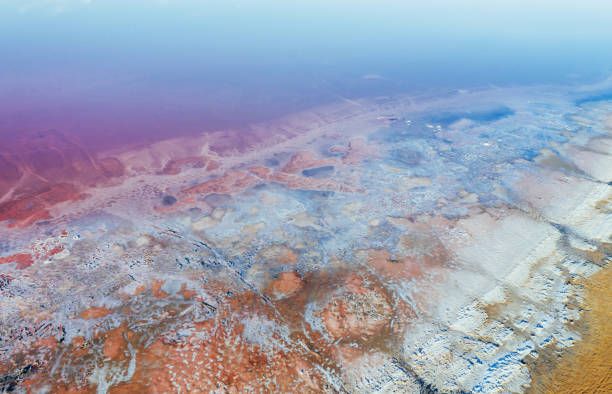
The quantity of them is astounding. The fact that this body of water has life despite so many flaws is also astounding. Millions of little flamingos build their nests and feed here. The water is inhabited by algae, bacteria, and even two species of fish. Zebras, ostriches, gazelles, lesser kudu, and jackals can be found in the areas close to Natron.
19. Drakensberg Grand Traverse, South Africa
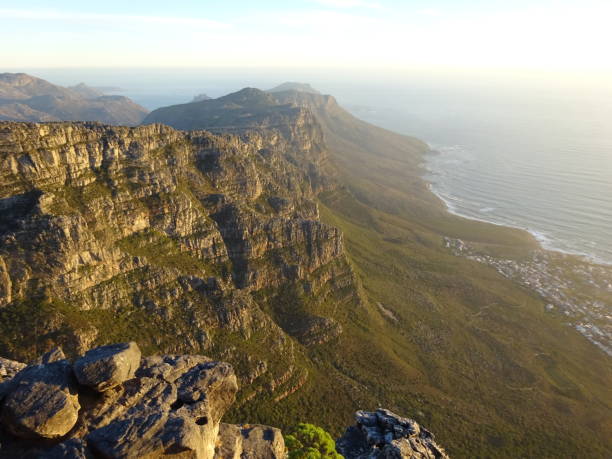
The Dragon Mountains trail is a 220 km hike that takes 6-12 days and is considered a challenging test of endurance. 55 deaths were recorded by the government until 1985. Although official counting has stopped, fatalities still occur annually on the trail.
Through Natal National Park goes the Drakensberg Grand Traverse. There are eight checkpoints spread out along its length despite its several changes. The route begins at the Sentinel parking lot and concludes at the border crossing at Bushman's Neck. The hiker must continue to advance steadily over sloping terrain, gaining 1,000 m on average each day.
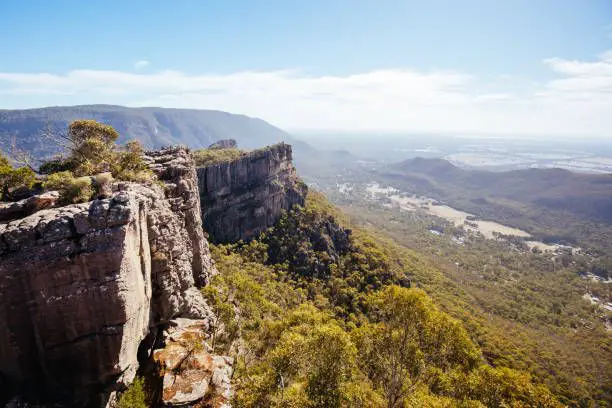
A climbers carrying a large rucksack must climb two nearly vertical ladders made of thin chains in the first few meters in order to reach the ridge's peak. It will also be the first of 30 ridges that must be crossed. Those who have finished the path rave about the breathtaking scenery and the sense of complete oneness with nature as justification for the effort.
20. Darvaza Gas Crater, Turkmenistan
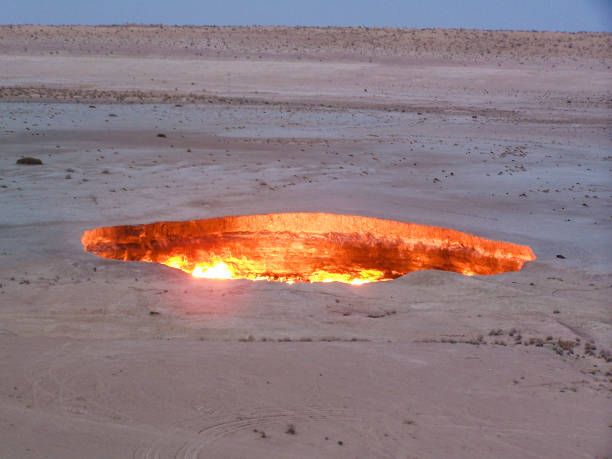
The Darvaza Gas Crater, also known as the "gateway to hell," is a fiery hole located in the Karakum Desert. It is 30 meters deep and has a diameter of 69 meters. Natural gas burns continuously in the crater, and it has been burning for over 50 years.
It is unknown what exactly led to the crater's development and combustion. However, the most likely explanation is that it first occurred in the 1960s, when oil exploration was conducted in a region close to the settlement of Darvaza, and the drilling rig was situated where a subterranean gas pocket had developed.
It was cracked open during drilling, the ground collapsed with the machinery, and natural gas actively began to flow out the cavity. In order to protect the villagers' residents, the geologists set fire to the sinkhole.

In their estimation, it would burn out after a few weeks. Since this hasn't happened yet, Turkmenistan now possesses its most recognizable and perilous landmark. Every year, more than 6,000 visitors come to witness Darvaza Gas Crater. Given that an average of 8,000 visas are awarded for entry each year, this is a remarkable number.
Naturally, everyone who visits the crater does so after dark, when it appears exceptionally stunning. However, stay away from the crater's edges, as they have a flimsy construction and may fall apart under your feet. The gas does not totally burn, and inhaling it is harmful to your health. Wild animals and deadly insects are also a threat because of the heat.
21. Mount Washington, USA

Mount Washington in British Columbia, USA, is attracting an increasing number of more daring tourists. In addition to hikers and climbers seeking a more intimate connection with nature and breathtaking views, the mountain boasts ski resorts.
Mountaineering is inherently dangerous, but Mount Washington presents a special risk that needs to be taken into consideration which is strong winds. The wind speed in this area, which can reach 203 mph, is strong enough to carry individuals away to their deaths. The temperatures, which can reach -40 °F, should also be considered by visitors.

Despite being only a little over 6000 feet in elevation, the mountain experiences extreme temperature variations and strong winds that amplify the dips. On Mount Washington, hypothermia spells and poor vision are the main contributing factors to accidents.
Mount Washington is known as the world's deadliest small peak. It is the tallest mountain in the northeastern United States and is subject to seasonal weather changes.
